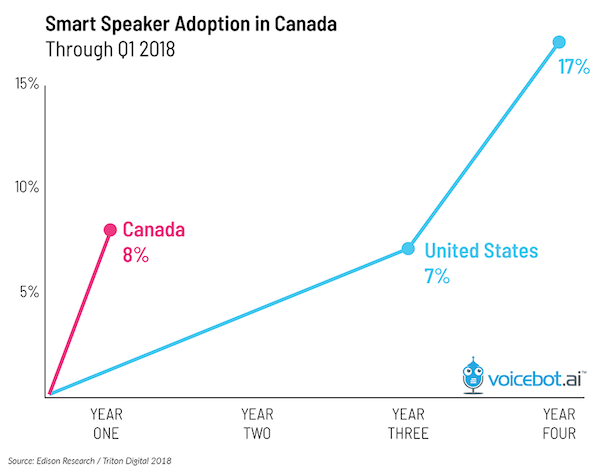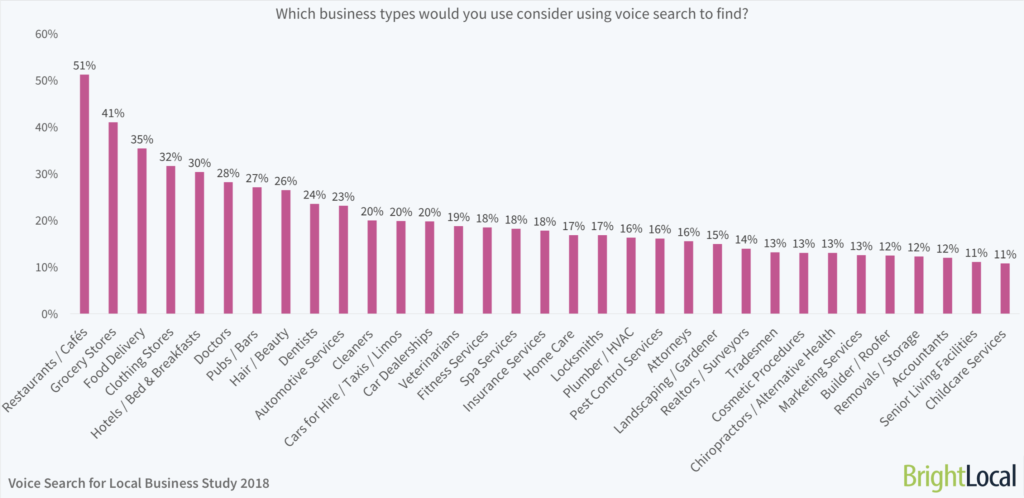Top 5 SEO Trends from SMX Advanced 2018
One of the most important things for our SEO team is staying on top of the ever-changing search landscape, and I was lucky enough to attend the 2018 SMX Advanced conference in Seattle in June to do just that. Technology progresses faster than ever these days and SMX Advanced brings together some of the leading authorities in SEO to share their insights on the trends, tools, and techniques in the SEO industry.

Over the past few years, we have seen SEO continue to evolve into a more technical discipline that is starting to creep towards web development territory while continuing to play a key role in the content strategy for websites.
With search engines like Google and Bing utilizing machine learning to provide users with relevant personalized results, it is becoming increasingly important that websites are technically sound so that they are discovered and ranked as well as possible. As the name indicates, the SMX Advanced conference focuses on advanced tools and techniques SEOs use when optimizing websites. In this post, I will be focusing on some of the insights and trends that I observed at the event as they relate to the more technical side of SEO.
Speed is Important
Last year, Adam noted in his SMX summary that a big topic of conversation was Google’s move to mobile first indexing. As of April 2018, Google has started the transition to mobile-first indexing, so if you haven’t addressed your mobile site yet, you’re late and need to do that now!
One of Google’s main focuses around the change to mobile first has become about pagespeed. The reason for this is mainly related to user experience as people on mobile devices simply don’t want to wait for a page to load. To aid in testing the speed of your site, Google has developed a couple of really helpful tools.
The first is their PageSpeed Insights tool and the other is the Lighthouse Chrome Developer Tools. Both of these tools allow you to gather important information about the speed performance of your site. Pagespeed is such an important measurement for Google that they have confirmed that is indeed a ranking signal for websites. There are many things you can do to improve the speed of your site such as minifying code, optimizing images, using responsive images instead of scaling them and using Content Delivery Networks (CDN) to speed things up.
When it comes to testing your pagespeed in the real world, it is important to test under different conditions and on different devices. For example, make sure to test on both a 3g and 4g (LTE) connection in a variety of environments like in an elevator or in an interior space of a building. Chances are your site is not as quick as you think it is and you can learn valuable information by testing things out. Wondering where a good interior space with poor reception is to test? Try a bathroom stall! Wondering how to test a whole bunch of different devices at the same time without using emulators? Try going to a phone store! Who says SEO isn’t creative?
HTTPS is Also Important
One of the jobs keeping SEOs busy these days is the migration of websites from HTTP to HTTPS. Google has been pushing for people to migrate to more secure websites for years and in February of 2018, they officially announced that beginning in July, websites that are not secure will be labelled as “non-secure” in the Chrome web browser. Chrome makes up over 50% of the browser use and being labelled as non-secure can certainly have a negative impact on users’ impressions of your site.
As more and more of the migrations have been getting done, the SEO community has noticed a few key insights:
- Google has clearly been giving priority to displaying sites that are https in search returns. All things being equal, if they have to choose between returning a result for a site that is secure versus one that is not, they will pick the secure site. This is especially true in highly competitive niches. If your site is not HTTPS already, it should be!
- Even the most well executed migration can result in a initial drop in rankings while the site is being reindexed. If a migration is done incorrectly, the drop can be much longer, and in some cases, permanent. It is important that best practices be followed when you migrate your site to avoid any long-lasting issues. Items included in this are proper 301 redirects, rel=canonical tags, and updated sitemap.xml documents. It is also important that all assets of your website (like images and PDFs) be moved over so that your site is fully secure.
Not all Ranking Factors are Created Equal
Evaluating and optimizing websites for SEO best practices has always been a bit of art and science. The industry has developed a whole suite of tools and ranking factors that we use to evaluate site performance. Ranking factors change all the time, and new studies and stats are released often.
With all this information available, it is important to step back and make sure you are comparing your site’s performance and features against the other sites within your competitive niche. It is also important to research and understand what the end user is looking for in a site in your niche. For example, using a tool such as Lighthouse, you can do a quick evaluation of technical factors that Google has deemed important to the performance of a quality site and ultimately user experience. The tool creates a report that grades your site against these benchmarks.
Example of ‘your’ website:

Often when you see the results of this test, they can come across as poor or needing improvement at the very least. It is important to take a step back and evaluate the performance of your competitive set as well. There is a good chance that they may not test any better than you or they may in fact test worse in one or more area.
Example of ‘your’ competitor’s website:

The takeaway here is that SEOs always want our clients to have the most optimized website that provides the best user experience possible, but it is also important that we take the time to focus our effort and limited resources on the areas that have the biggest impact. The example above references technical factors like pagespeed and load times, but this can equally be applied to the area of content development and microdata/schema markup, etc.
Just because you can add functionality or optimizations to your site, doesn’t mean that you should. If others in your niche are either not doing it or are doing it worse than you are, you may want to focus your resources on other optimizations that will have a larger impact on your rankings.
Voice Search is Here and It’s Not Going Anywhere
Use of voice search via virtual assistants like Amazon’s Alexa and the Google Assistant has had explosive growth over the past 12 months thanks to the booming sales of smart speaker devices like the Google Home and Amazon Echo.
This has put the optimization of voice search results on the radar of SEOs. There was a time not long ago that people weren’t sure if the use of voice search would be significant enough to warrant the effort to optimize to. This was especially true in Canada where the availability of smart speakers was delayed by several years compared to the US. Since being released in Canada, the adoption rate of smart speakers has surpassed what took 3 years to accomplish in the US market.

While optimizing for voice search is still in its infancy, the general consensus is that the vast majority of voice search results are being served from Google My Business listings and featured snippets/direct answers through the implementation of microdata and schema markup.
Recent studies also indicate that people are much more willing to use voice search for an ever-increasing number of business types.

2018 is the year of voice search going mainstream and if you haven’t started thinking about how you can leverage voice search through either organic results or Alexa Skills/Google Actions, you should be or you could get left behind.
SEO is More Important Than Ever
In the opening of this post, I mentioned that SEO is getting more technical in nature. Not long ago, there was fear the advancements in technology and the rise of paid search would kill the SEO industry. In actual fact, the exact opposite has happened. Ever increasing competition on paid search has continued to drive up costs and new technologies like voice search have made it more important than ever that websites are structured properly to take advantage of them. According to Moz, Paid Search only accounts for 4% of clicks while organic listings receive roughly 50%. The upside for SEO is huge when considering this kind of user behaviour.
SEO is Alive and Well
Organic search continues to play a huge role in delivering cost-effective conversions from websites and we are committed to staying on top of the latest trends in the industry by attending events like SMX Advanced. We would love to hear from you if you have any questions about your website’s performance or if you are looking for ways to take the performance of your site to the next level.
